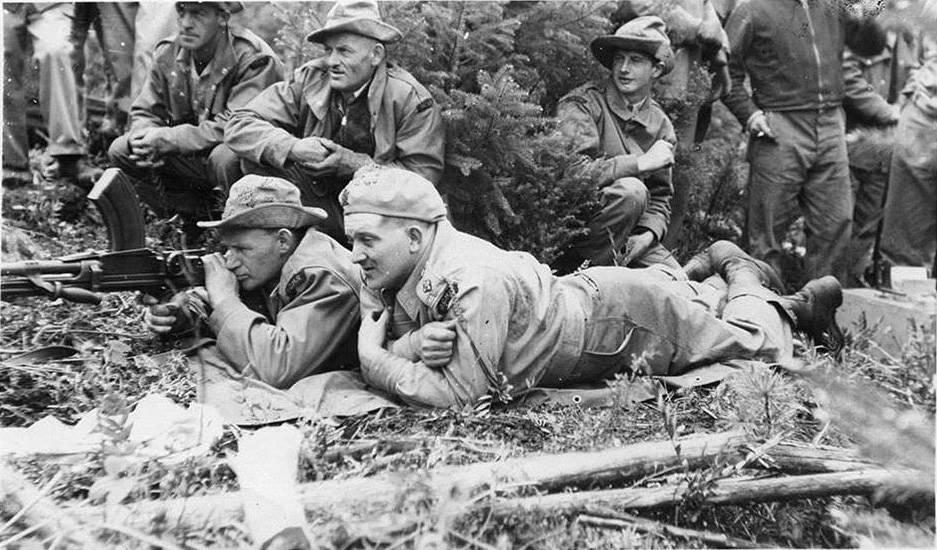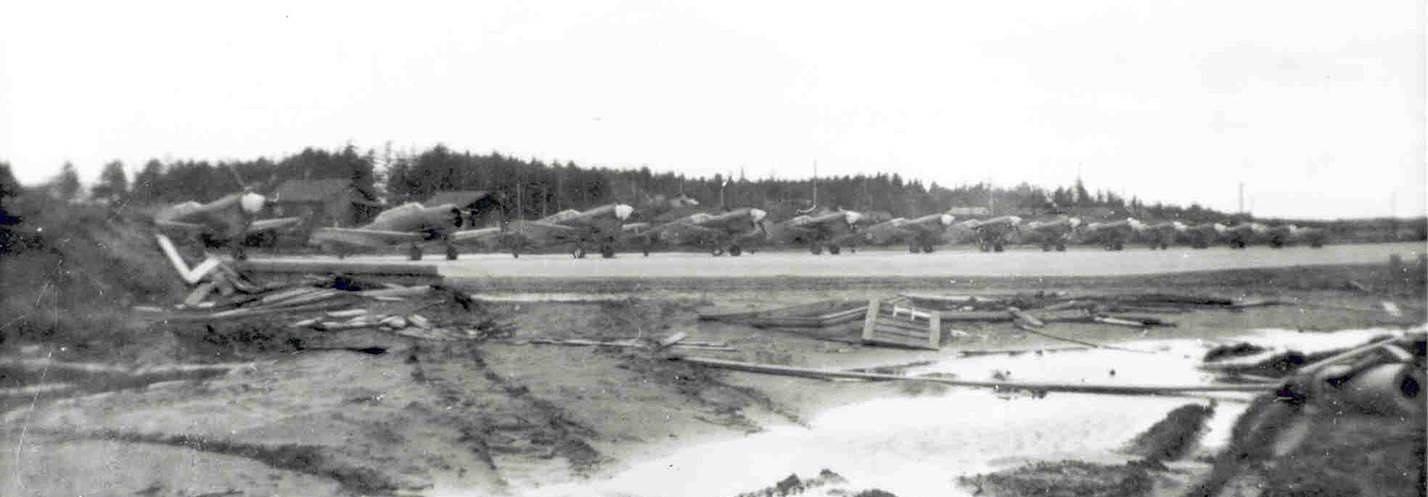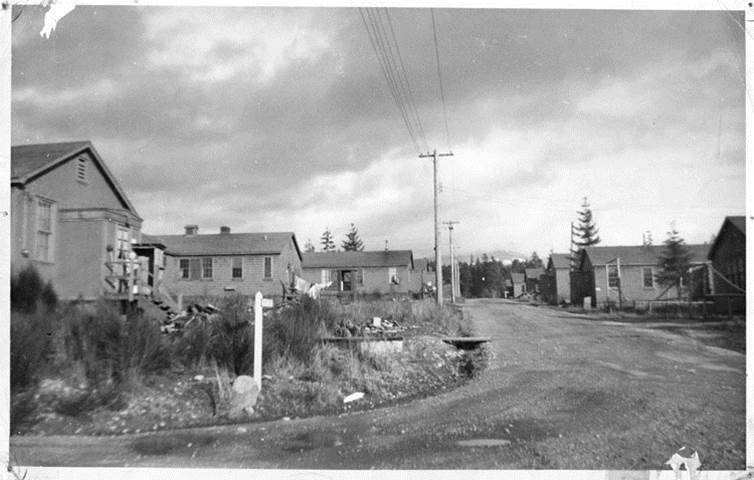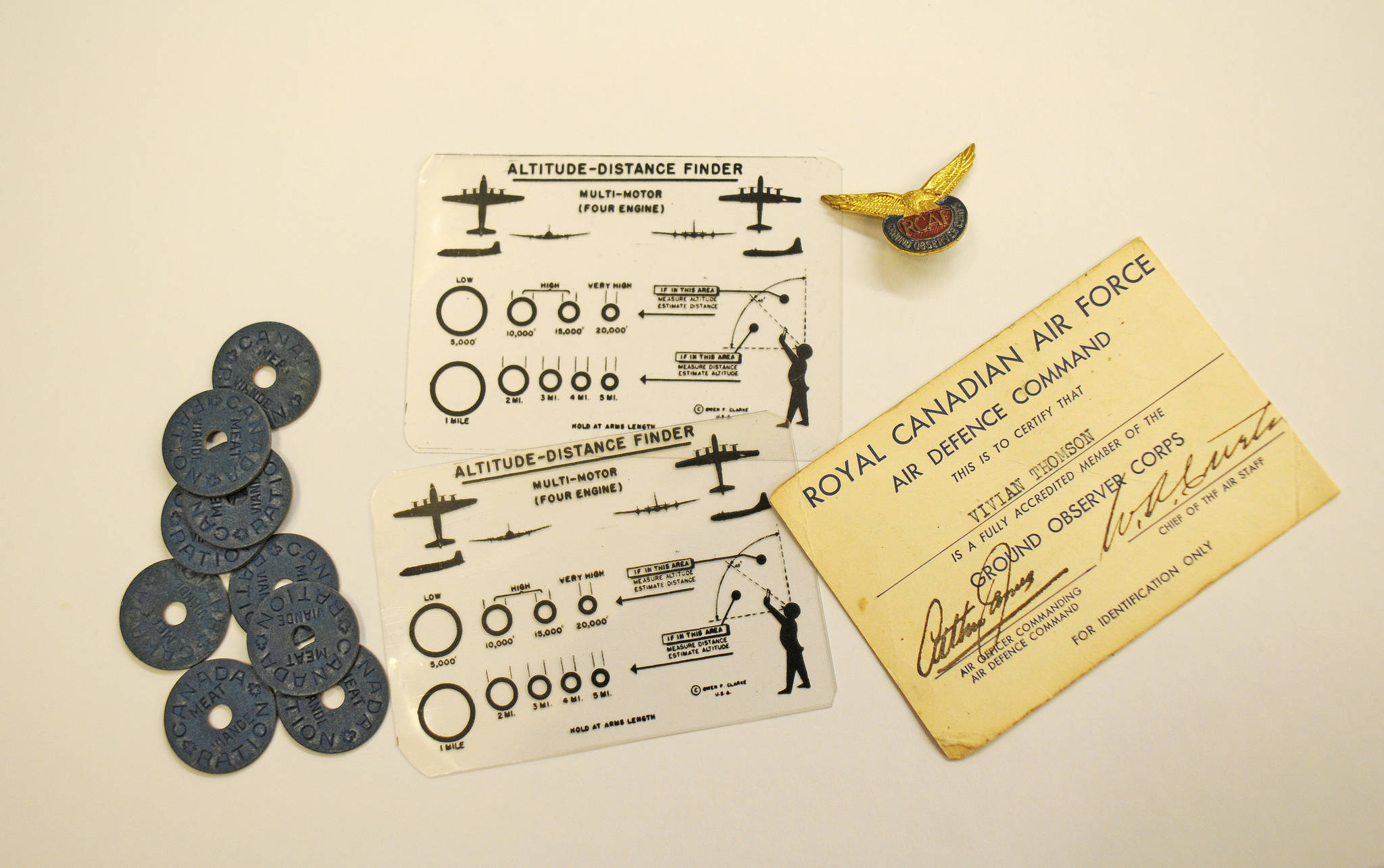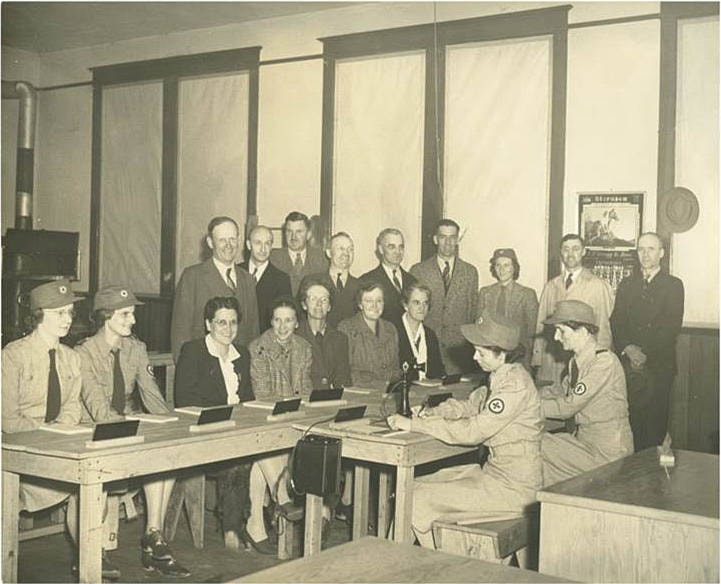The Alberni Valley Museum has received a $21,000 grant to create a travelling exhibit with the Royal BC Museum called The Home Front: World War II in British Columbia.
The exhibit opens in Port Alberni on Nov. 16 and will feature three cases full of artifacts from the Royal BC Museum as well as artifacts from wartime in the Alberni Valley.
The Home Front exhibit took a bit of a turn from the original concept, museum manager Jamie Morton says. “Originally we were going to look at the 75th anniversary of the home front in the Alberni Valley. Then I applied for and received a Canada–BC 150 grant for $21,000. That funded us to do something in conjunction with the RBCM…to create a travelling exhibit.
“That meant the scope widened up to BC.”
Earlier this year the museum held a tea and open house asking for people to come with their stories and artifacts about the Second World War.From the tea, the museum received a few items on loan for the Second World War exhibit, such as meat ration coins and aircraft spotting cards that members of the volunteer ground observer corps used to identify military aircraft.
The Alberni Valley Coin Club has loaned a display of Second World War memorabilia for the exhibit too, and someone else loaned a wool great coat that was worn by the donor’s grandfather, a member of the Pacific Coast Rangers.
The Home Front exhibit will show how the Second World War affected BC, augmented with a display on the war influence in Alberni and Port Alberni in the 1940s. “We are a microcosm of what happened provincially,” Morton said.
“From 1939–41 everybody knew about the war; the war was a big deal. The rate of volunteering was very high in the Alberni Valley and in BC generally,” Morton explained. “With the war effort people started thinking about saving, rationing.”
When the Japanese Navy Air Service bombed Pearl Harbor, Hawaii on Dec. 7, 1941, “that did coalesce a real fear of attack on the west coast and particularly here in Port Alberni,” he said.
“The first thing that happened was the Japanese internment and that had an impact in Alberni, but also Tofino, Ucluelet and outlying canneries.”
There were approximately 21,000 Canadians of Japanese heritage rounded up in BC alone and sent to internment camps, their homes and businesses seized and sold. That affected labour markets, commercial fishing and canneries on the west coast, Morton said. “It was a big impact and came as a real shock to people when it happened.”
An army camp was built in Port Alberni, where Glenwood Centre is located now, as part of the broader home defence forces. The Sixth Division of the Infantry had brigades assigned to Port Alberni, and 1,500 men were posted to the military here.
“It was a big impact on the community,” Morton said. “People mostly remember it post-war, when the high school was put in there temporarily.”
Some of the army huts are still visible—the Kin Hut, used as headquarters for the Alberni District Fall Fair office, is one of them, as is the H-shaped building on the site.
The Pacific Coast Militia Rangers formed in early 1942 “everywhere” in BC, including the Albernis, where a group of 200 men formed a militia unit as part of the home defence effort. “They were mostly loggers, fishermen, miners, a fair number of First Nations people signed up,” Morton said.
“They were people already working in the bush…their main role was surveilling and reconnaissance.” There were 15,000 militia members throughout BC, and the 200-strong unit in Alberni was large considering there were only about 1,000 people living in the area at the time.
“The other thing that was a big deal during the war was the plywood plant was built as part of (the war effort),” Morton added. H.R. MacMillan was in charge of procuring wood products for the war effort; he already owned APR Mill as well as mills and a plywood plant in the Lower Mainland. Plywood “was the miracle product” of the 1940s, Morton said.
Employees at the Alberni Plywood Plant were predominantly female, and earned the moniker The Plywood Girls.
“There was a huge demand for plywood and lumber in general during the war.”
Morton hopes other museums in BC will pay to bring this travelling exhibit to their facilities; if that happens, Port Alberni’s war history will gain a broader audience. So will the AV Museum’s reputation, he added. In the meantime,
The Home Front will open Nov. 16 and will stay in Port Alberni until May 2018.
The Alberni Valley Museum is located at Echo 67 Centre, 4255 Wallace St., Port Alberni.
editor@albernivalleynews.com
